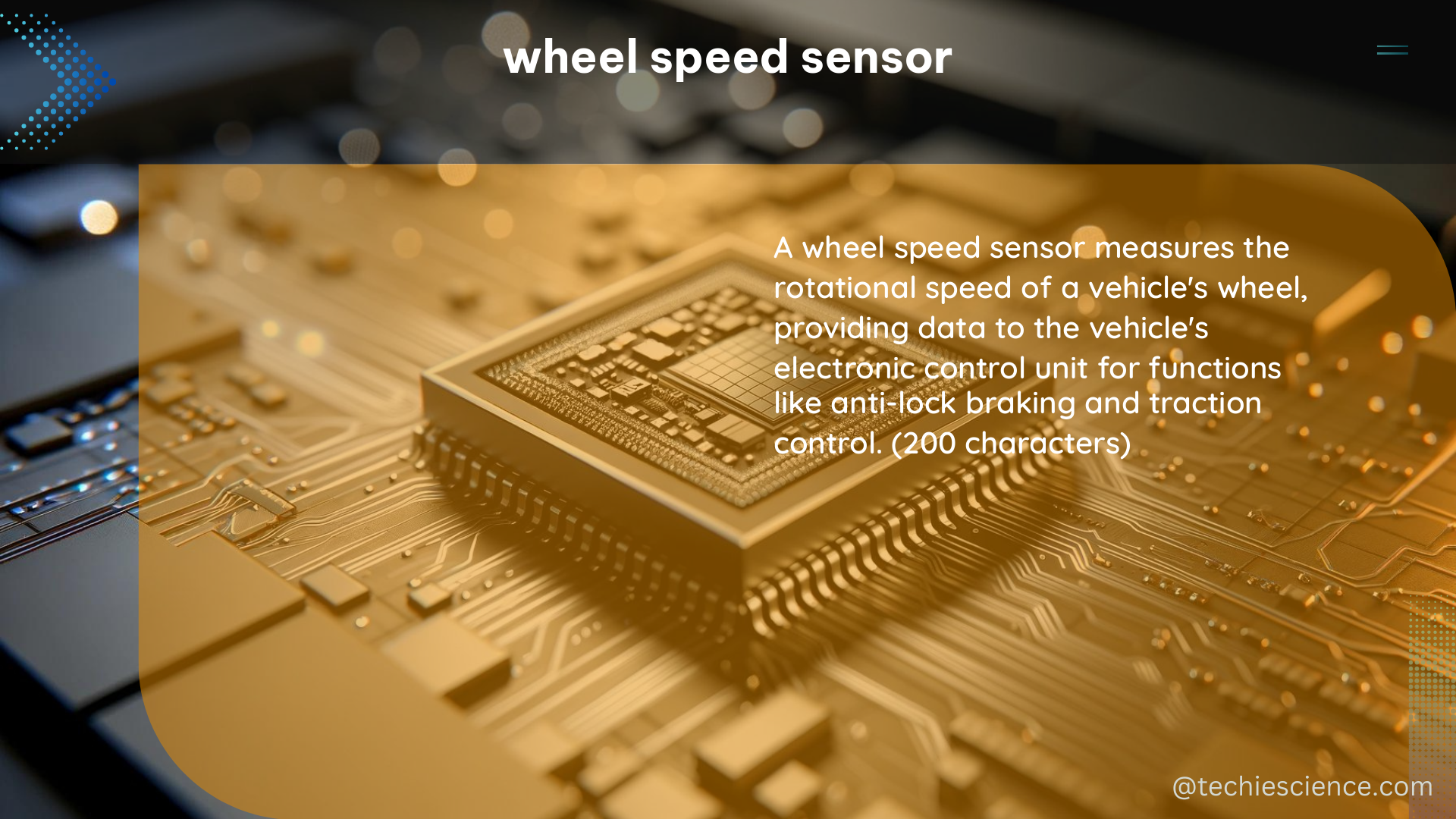Wheel speed sensors are crucial components in modern vehicles, measuring the rotational speed of the wheels and providing vital data for active safety systems such as anti-lock braking systems (ABS), traction control, and stability control. These sensors operate by detecting changes in magnetic fields caused by the rotation of a toothed impulse or tone ring, which is connected to the wheel hub or driveshaft.
Understanding Passive and Active Wheel Speed Sensors
Wheel speed sensors can be classified as either passive or active, based on their operating principles. Passive wheel speed sensors generate an alternating voltage signal in response to the changing magnetic field, while active sensors require a supply voltage to operate and generate an output signal.
Passive Wheel Speed Sensors
Passive wheel speed sensors have two wires: ground and signal. They are ineffective at generating a usable signal at slower vehicle speeds due to the control unit requiring a minimum amplitude for the signal. To diagnose a passive wheel speed sensor, you should:
- Visually inspect the affected sensor, its related wiring, and connections for any problems.
- Measure the sensor’s resistance with a digital multimeter (DMM). If the resistance is out of the typical range of 1,000 to 2,500 ohms, the sensor will not produce an accurate signal.
Active Wheel Speed Sensors
Active wheel speed sensors, on the other hand, output a digital, DC square wave signal, unlike the analog, AC sine wave produced by passive sensors. They are typically used in most late-model ABS, traction, and stability control systems due to their advantages. Active sensors have three wires: ground, signal, and power.
Technical Specifications of Wheel Speed Sensors

Regardless of whether they are passive or active, wheel speed sensors typically have the following technical specifications:
- Resistance range: 1,000 to 2,500 ohms
- Passive sensors: Generate an alternating current (AC) voltage signal
- Active sensors: Output a direct current (DC) square wave signal
- The frequency and amplitude of the AC voltage signal change in direct relation to wheel speed for passive sensors
- The frequency of the DC square wave signal changes for active sensors
Diagnosing and Testing Wheel Speed Sensors
When testing wheel speed sensors, it is important to use a scan tool to observe and graph the data from both passive and active sensors. Your scan tool will also point to problems with a specific speed sensor or its circuit by logging a diagnostic trouble code (DTC). Here’s what to look for:
- Look for a clean signal from each sensor.
- Compare the signals from all sensors on a vehicle to ensure they look the same.
- Look for abnormalities indicating broken or damaged parts.
Advanced Applications of Wheel Speed Sensors
While wheel speed sensors are typically associated with safety systems such as ABS, they can also be used for other applications, such as data logging for performance analysis or custom dashboard displays. By interfacing a wheel speed sensor with an Arduino or similar microcontroller, it is possible to measure and display wheel speed data in real-time, providing valuable insights into vehicle performance and behavior. This can be particularly useful for motorsports applications, where precise measurement of wheel speed can aid in vehicle setup and tuning.
Conclusion
Wheel speed sensors are an essential part of modern vehicle safety systems, and understanding their operation, technical specifications, and testing methods is crucial for accurate diagnosis and repair. By mastering the fundamentals and advanced diagnostics of wheel speed sensors, you can ensure your vehicle’s safety systems are functioning correctly and unlock new possibilities for performance analysis and custom applications.
Reference:
- Brake Shop: Wheel Speed Sensors – MOTOR: https://www.motor.com/magazine-summary/brake-shop-wheel-speed-sensors-april-2016/
- Reading an ABS wheel speed sensor – Electronics Stack Exchange: https://electronics.stackexchange.com/questions/160113/reading-an-abs-wheel-speed-sensor
- Wheel Speed Sensor Diagnostics for Meters and Scopes: https://www.tirereview.com/wheel-speed-sensor-diagnostics-for-meters-and-scopes/

The lambdageeks.com Core SME Team is a group of experienced subject matter experts from diverse scientific and technical fields including Physics, Chemistry, Technology,Electronics & Electrical Engineering, Automotive, Mechanical Engineering. Our team collaborates to create high-quality, well-researched articles on a wide range of science and technology topics for the lambdageeks.com website.
All Our Senior SME are having more than 7 Years of experience in the respective fields . They are either Working Industry Professionals or assocaited With different Universities. Refer Our Authors Page to get to know About our Core SMEs.